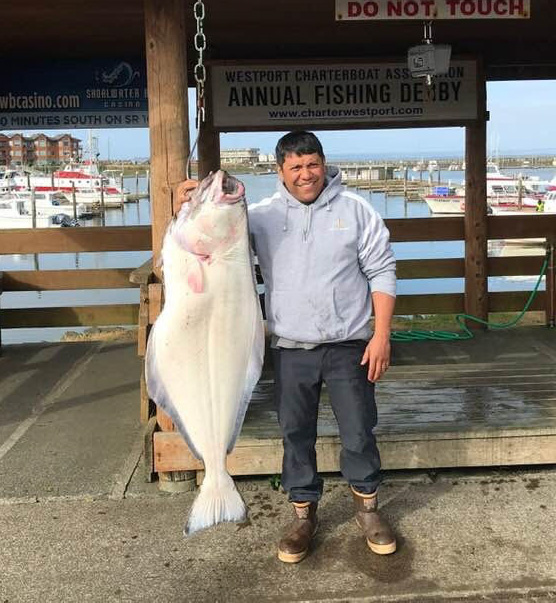Pacific halibut
Pacific halibut
Halibut have been fished since time immemorial by native Americans on the west coast of the U.S. The U.S. commercial fishery started in 1888, when halibut were first landed in Tacoma, Washington.
Pacific halibut live in the waters stretching from Nome, Alaska down to Santa Barbra, California. The United States and Canada coordinate Pacific halibut management through the bilateral commission known as the International Pacific Halibut Commission (IPHC). The IPHC sets the total allowable catch of Pacific halibut, the Council’s Halibut Catch Sharing Plan dictates how the total allowable catch will be divided among users and user groups off the West Coast (IPHC Area 2A), and the National Marine Fisheries Service (NMFS) implements and enforces regulations developed by the Council.
The annual management cycle and activities related to Pacific halibut are described in Council Operating Procedure (COP) 9. These activities are summarized in the table below.
| YEAR 1 | |
| September Council Meeting | The Councilreceives recommendations from the states and the public on changes to the recreational and non-tribal commercial halibut fishing season structure for the coming year (i.e. changes to the Catch Sharing Plan). If necessary, the Council adopts any proposed changes for public review. |
| November Council Meeting | The Council receives a report on the status of the current halibut fishery. The Council receives further public input on the changes adopted for public review in September and adopts management changes for the coming fishing year. Any adopted changes are made to the Catch Sharing Plan and implemented by NMFS. |
| YEAR 2 | |
| January | The Council hosts a meeting (webinar or in-person) with the IPHC Area 2A government management entities, Council members, and appropriate advisory panel members. At this meeting, attendees review IPHC reports on Area 2A and coordinate and prepare for the IPHC annual meeting, which occurs in January of each year. |
| March Council Meeting | The Council adopts, for public review, a range of landing restrictions for incidental halibut harvested in the non-tribal salmon troll fishery and final landings restrictions for incidental halibut harvested in the non-tribal sablefish primary fishery north of Point Chehalis, Washington. |
| March | The Council holds public hearings to receive input on salmon season alternatives, which includes the options for the incidental halibut harvest in the non-tribal salmon troll fishery adopted at the March meeting. |
| April | The Council adopts final recommendations for the incidental halibut harvest in the non-tribal salmon troll fishery. |
| May – September | The NMFS regional director makes inseason adjustments to subquotas, sport seasons, non-tribal directed halibut fishery season, and vessel limits, as necessary. |
Actions in Progress

KEY DOCUMENTS
Upcoming Council Meeting
September Council meeting
Spokane, WA
DoubleTree Spokane City Center 322 N Spokane Falls Court - Spokane, WA 99201 509-455-9600
Events

Contacts
-
Angela Forristall
503-820-2419
Angela.Forristall@pcouncil.org